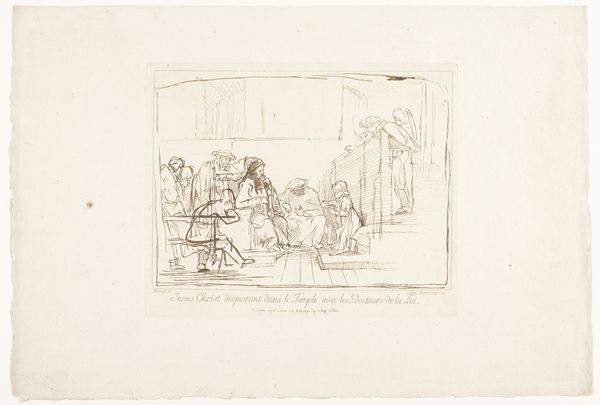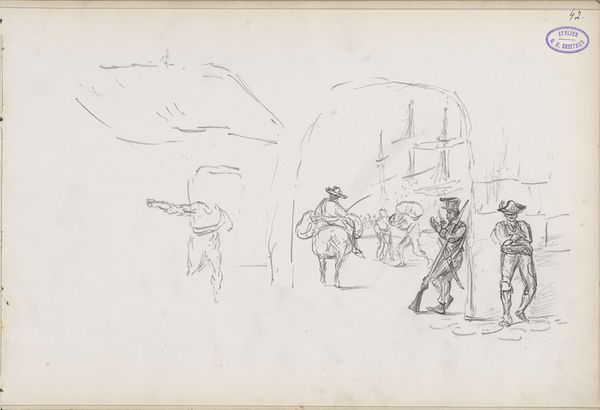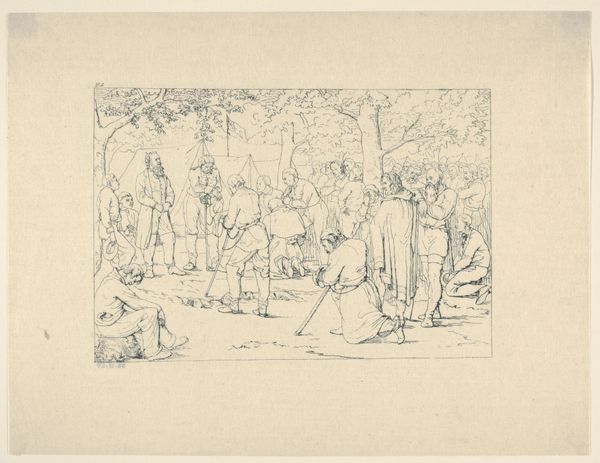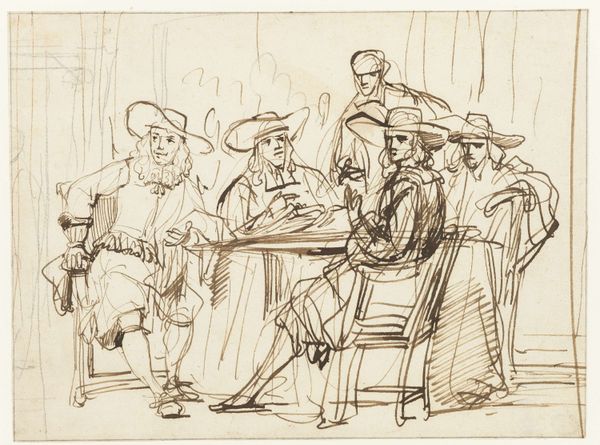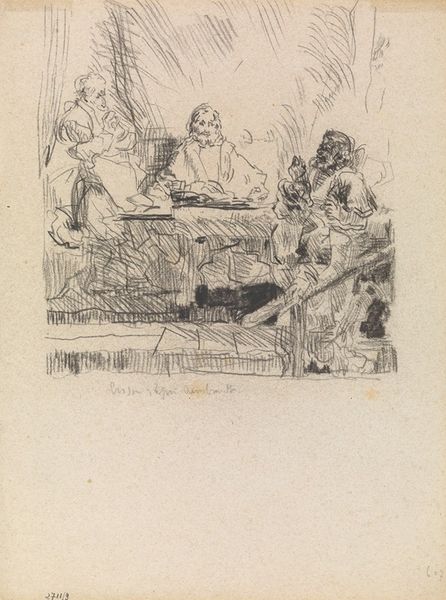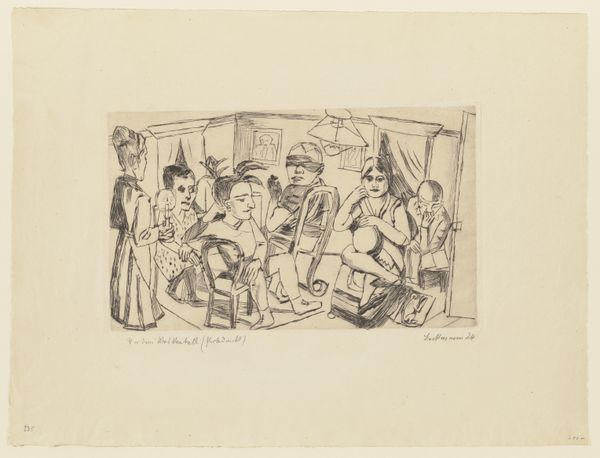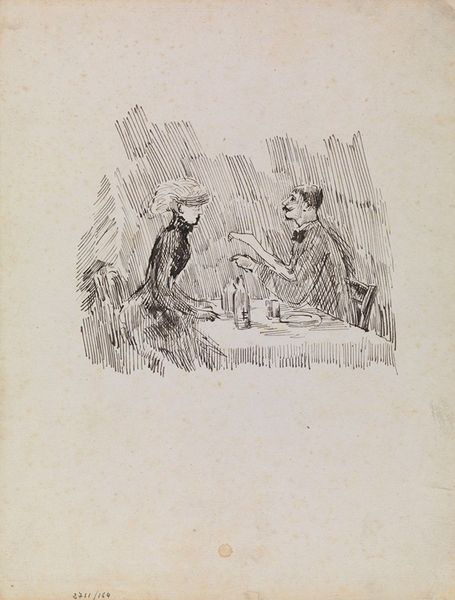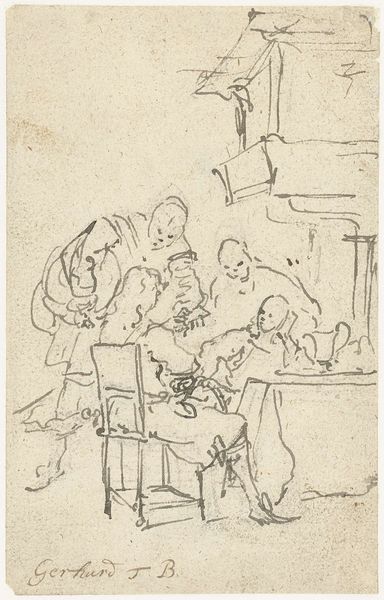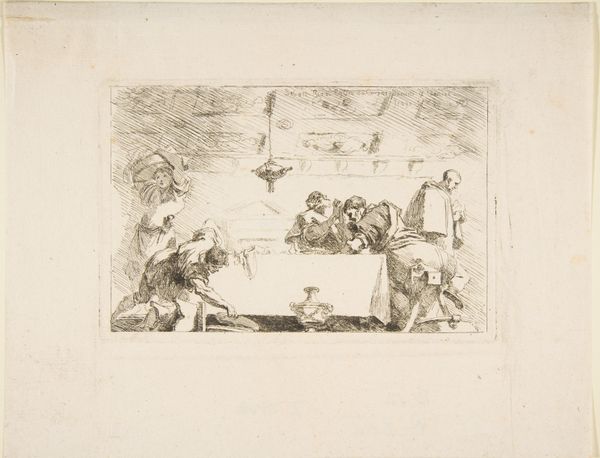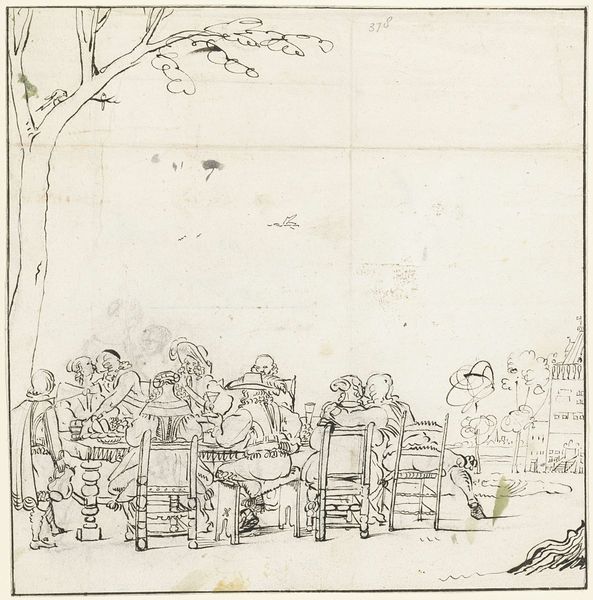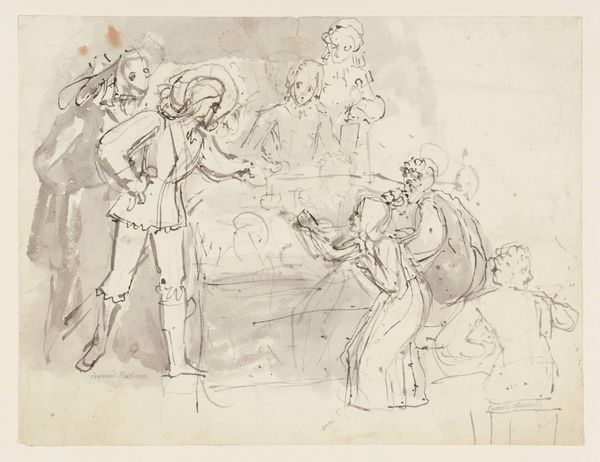
Dimensions: height 215 mm, width 275 mm
Copyright: Rijks Museum: Open Domain
In this ink drawing from 1860, Johan Michaël Schmidt Crans captures a Dutch ‘summer’ scene that seems anything but. Note the umbrellas, heavy coats, and shivering figures. The artist uses the iconography of summer—outdoor gatherings, open spaces—juxtaposed with symbols of winter, such as heavy clothing. This paradox speaks to the uncertain and often disappointing reality of seasonal change. Consider the motif of the umbrella. In many cultures, it’s merely a practical tool against the elements. However, its symbolic presence here—dominating a supposed summer scene—recalls its earlier role as a symbol of power and protection, as seen in ancient Near Eastern art where parasols shaded rulers, marking their divine status. Schmidt Crans's image, charged with irony, may evoke a collective cultural memory of failed expectations. The juxtaposition creates a palpable tension, a shared, almost subconscious understanding of nature's whims. The artist engages viewers on an emotional level, making them aware of the profound connection between human hope and the unpredictable forces that shape our world. This is a cyclical return of nature's power over humankind.
Comments
No comments
Be the first to comment and join the conversation on the ultimate creative platform.


